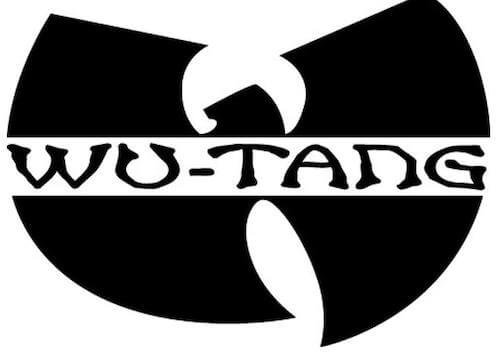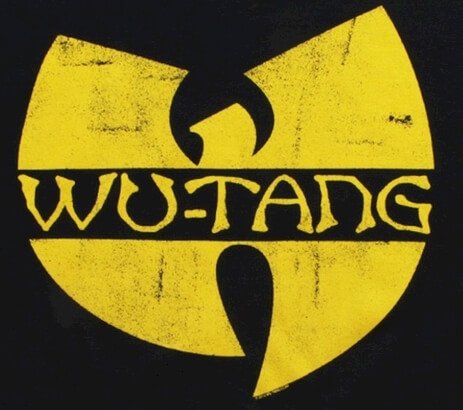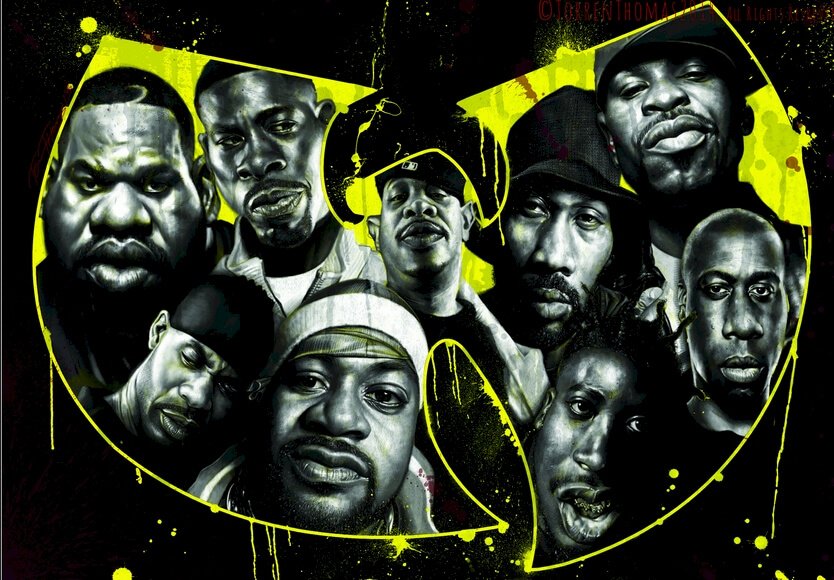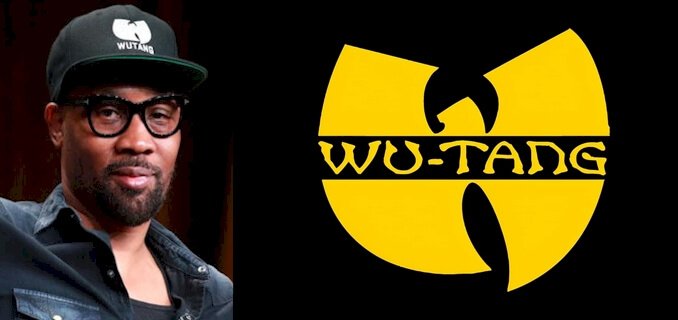Let’s get an insight into the Wu-Tang logo and some history behind the influential rappers.
Do you know the number of hip-hop groups in the United States?
And can you name the most influential group of all time?
I know these two questions have kept you thinking. They have flooded your mind with images of your favorite artists. Yet, you’ll be wondering if any of them is at the top. That’s just fine! Regardless of your pick, Wu-Tang Clan is one of the most influential in the game.
The group came when the airwaves were ruled by West Coast sound. However, with its first album—Enter the Wu-Tang (36 Chambers), the narrative shifted. The sound was unique and pleasing to many. The success of the album engraved its brand into the hearts of millions.
Comprising nine members, Wu-Tang Clan has recorded eight studio albums. This excluded albums released by individual members of the group. Inspired by Asian philosophies, you’ll find albums like Wu-Tang Forever, The W, and Once Upon A Time In Shaolin.
To appoint an ambassador for the group, Wu-Tang Clan settled on a golden logo. It was crafted from the group’s first letter—W. This custom logotype reminds you of a bird or compact disc. It’s attractive, unique, memorable, and timeless. With these vibes, you’ll like to become a fan.
The saga continues; let’s follow up!
Wu-Tang Logo Evolution
The Wu-Tang logo surfaced in 1993. It depicts a lone stylized letter—W, which resembles a flying bird. Creatively, the same mark mimics the letter—M. Across the surface of the emblem in flight is the brand’s name—Wu-Tang in caps.
Why Does Wu-Tang Logo work?
1. The Logo Is Unique:
The golden Wu-Tang logo is unique among iconic trademarks in the field. This is because the custom letter—W isn’t identical to other emblems. In addition, the unique persona makes it highly noticeable even in a crowded location.
2. The Logo Is Readable:
The font used for the caption isn’t out of context. It’s clean and readable, making it relatively easy for fans to process. As a result, it provides an avenue for fans to build a lasting connection with it. In brief, legibility attracts, keeps, and creates loyal fans.
3. The Logo Is Simple:
Logos with simple layouts can permeate the minds of people. That’s because they have fewer graphic elements. Luckily, the Wu-Tang emblem follows the same modest path. So, at the slightest encounter, fans get intimate with it. It’s no secret that modesty comes with visibility.
4. The Logo Is Memorable:
It’s a fact that simple emblems are memorable. But, seriously, it takes an expert to craft a logo to meet this quality. With a unique persona, clean layout, and attractive image, the Wu-Tang logo is memorable. The overall design is soft on the eye, allowing it to flirt with fans.
5. The Logo Is Timeless:
The stylized—W logo is twenty-eight years but still topping charts. The designer was mindful of choosing design elements that aren’t time-bound. This has built a potent image for the brand and made it influential and recognizable. Timeless trademarks help brands save money.
Wu-Tang Logo Design Elements

The Wu-Tang logo is a minimalist trademark. It was created in-house on short notice. After careful brainstorming and tweaking, Maurice and Robert settled on a golden stylized—W as the brand’s official ambassador. So, if you love tales, escort me to the recording studio for more.
Wu-Tang Logo Shape And Symbols

1. A Bird:
The famed Wu-Tang symbol resembles a bird with spread wings. In their glory, birds are symbols of freedom. However, each type of bird has its unique symbolism. For instance, parrots signify beauty, expression, and happiness. Also, eagles stand for strength and vision. So again, depending upon their species, a bird can signify peace, wisdom, hope, and elevation.
2. A Disc:
A compact disc is another object that the celebrated logo depicts. This is in direct connection with the profession of the group: music. As a musical mark, a disc signifies the power to play. It also represents melody, harmony, rhythm, and auditory.
Wu-Tang Logo Colors
1. Yellow Color:
Yellow is one of the official hues of the Wu-Tang logo. It’s the brightest color among the warm hues. Yellow, the color of some fruits, represents hope, joy, honor, and clarity. Yet, on the flip side, it can signify deceit, cowardice, and jealousy.
2. Black Color:
To a large extent, black is a color of mystery. Wu-Tang also favored black, the color of night. So, sometimes, the logo dazzles in it. Among the neutral colors, black is the strongest. Its positive emotions include wealth, authority, and elegance. More so, fear, death, and evil are a few of its negative associations.
3. White Color:
The next color that evokes the Wu-Tang personality is white. It’s a universal color for the brand. Why? Because, whether the logo wears yellow or black, it’s always there to provide clarity. White represents humility, cleanliness, and purity. It can also inspire faith, safety, and perfection.
Who Created the Wu-Tang Logo?
The Wu-Tang logo is the handiwork of Ronald Maurice Bean. Among the business fraternity, Ronald is widely called Mathematics or Allah Mathematics. He is a DJ, record producer, and graphic designer. He has a long-standing relationship with the Wu-Tang Clan.
How Did Wu-Tang Get Its Logo?

With promotion underway, Robert Fitzgerald tasked Ronald Maurice (aka Mathematics) to design a logo for the Wu-Tang Clan. The clan’s de facto leader asked Maurice to take inspiration from their single—Protect Ya Neck. Using this guide, Maurice drew the prototype.
It was a mark with its head cut off and blood dripping. However, Robert thought the logo was too detailed. He wanted a simple trademark. So he asked Maurice to focus only on the letter—W, which references the brand’s name.
Finally, Maurice came out with an emblem that’s revered worldwide. It’s a dynamic logo that evokes the charisma of each member of the group. Interestingly, this logo inspired other creative assets, such as the M and G logos. These marks belong to Method Man and GZA, respectively.
Is Wu-Tang Logo Trademarked?
Why is Wu-Tang Clan suing Woof-Tang Clan, a Brooklyn dog-walking firm? Well, the legal battle boils down to trademark conflict. Robert Diggs, famously called RZA, owned the trademark for almost twelve years. He registered it on 24th February 2009. That’s the fact!
Is the Wu-Tang Logo A Bat?
What is the link between Wu-Tang and Wuhan? Though the famous Wu-Tang logo looks like a bird. But what kind of bird does it reference? Sadly, the answer is hard to figure out, as there’s no hint from the owners. Well, the world is battling the coronavirus since 2020.
It’s now common knowledge that the virus was first seen in Wuhan, China. But, again, experts have suspected the virus of coming from bats. So tension blew between China and Canada over t-shirts bearing the iconic logo. Shockingly, instead of the group’s name, the t-shirt had Wuhan.
Most Chinese were angered by this image, believing that the bird is a bat. They also felt the Canadians insulted them by subtly linking the bird to the city of Wuhan. The Canadians, however, thought otherwise. To them, the mark wasn’t intended to represent a bat.
According to Christelle Chartrand, the stylized—W was crafted by an embassy worker and wasn’t endorsed by the embassy or Global Affairs Canada. She remarked that the branded t-shirts were designed for the embassy staff working to repatriate Canadians from Wuhan.
Ms. Christelle, the Canadian Foreign Ministry spokeswoman, apologized for the mix-up. But the Chinese Foreign Ministry spokeswoman, Wang Wenbin, said the reason wasn’t convincing.
How Wu-Tang Got Started?

Wu-Tang Clan was formed in 1992 at Staten Island, New York. It comprised nine musicians inspired by Chinese culture: The initial members were Method Man, Masta Killa, U-God, and RZA. The rest included Raekwon, OI’ Dirty Bastard, Ghostface Killah, GZA, and Inspectah.
The Kung-fu movie—Shaolin and Wu-Tang inspired the group’s iconic name. The name was further adopted from Wu Dang, the Taoist holy mountain in China’s Hubei Province. In 1993, Wu-Tang Clan released its maiden single—Protect Ya Neck. It inspired the group’s logo design.
Then, with support from Loud Records, the group released its debut album—Enter the Wu-Tang (36 Chambers). This album changed the hip-hop landscape for good. Even today, critics regard it as one of the greatest of all time in hip-hop history. The album was released in November 1993.
The group had a flexible contract with Loud Records. It gives them the right to negotiate individual deals with other labels. This confirms the influence of the group in the earlier 1990s. So, aside from group songs, you’ll find individual music as well.
After working on individual projects, they came back in 1997. Eventually, they released their second album—Wu-Tang Forever, in June. It eventually shot to the number one spot on the Billboard 200. As to be expected, it was nominated for the Best Rap Album at the 1998 Grammy Awards.
Sadly, it lost to the ladies man, Sean Combs (P. Diddy). Then, in November 2000, the group’s third album—The W, came out. Unfortunately, OI’ Dirty Bastard had to record from prison via telephone. Well, despite Bastard’s confinement, the album enjoyed double-platinum status.
Wu-Tang Clan released “Iron Flag” a year later. It was the group’s fourth album. Though the group continued to entertain fans, it faced some challenges along the way. For instance, in 2004, there was a conflict between RZA and U-God.
Bastard also had multiple problems with the law enforcers. Sadly, he died in New York after collapsing at Wu-Tang’s recording studio. This sad event took place on 13th November 2004. After his burial, business continued as usual: from individual projects to the group’s next album.
So, in 2007, Wu-Tang released 8 Diagrams, its fifth album. This project ushered Cappadonna into the official group. Then, again, after several issues, the group released its sixth album in 2014. It was dubbed—A Better Tomorrow and released via Warner Bros.
Within three years, Wu-Tang released two albums. Thus, Once Upon A Time In Shaolin and The Saga Continues. These mark its seventh and eighth albums respectively in 2015 and 2017. Thus, for the past twenty-eight years, the Wu-Tang Clan has changed the hip-hop narratives.
Its influence on the music scene inspired its illustrious name to be inked on a New York street.
Why Is It Called Wu-Tang?
The group’s first album, Enter the Wu-Tang (36 chambers), shows the stars’ passion for the name. In the 1980s, Chinese movies dominated the screens in many households. Like other teens, the fighting styles in the movies fascinated the group members.
It wasn’t startling they took inspiration from the movie—Shaolin and Wu-Tang in 1983. This classic movie featured one of the Chinese fighting brands, martial arts. Moreover, it was an exciting movie that appeals to teenagers, especially boys. So, they also became loyal fans.
My Final Thoughts On Wu-Tang Logo History
Music is one medium for expressing one’s feelings, ideas, and philosophies. Like food, it has many flavors. For instance, hip hop is one such genre. This style of music originated from the Bronx, New York, in the 1970s. Since then, it has become part of American pop culture.
Hip hop has inspired many people. Yea! Wu-Tang Clan, is one out of several across the world. Emerging from Staten Island, the Wu-Tang Clan tasted its fame in 1993. However, before releasing its all-time album—Enter the Wu-Tang, it released the single—Protect Ya Neck.
This single song inspired the Wu-Tang logo in the same year. Today, it’s one of the most recognizable logos in the world. In addition, Wu-Tang Clan has kept a nine-member group for almost twenty-eight years. Though in 2004, it lost one of its members; it found a replacement.
The hip hop group from New York has impacted the hip hop landscape with its lyrics and stagecraft. So, it’s no surprise that most fans regard it as one of the most influential voices in music. So this tribute is well deserved. But, as the brand nears its thirtieth birthday, let’s wait for its birthday plan.







